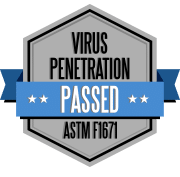What are healthcare-associated infections?
Healthcare-associated infections (HAIs), also known as healthcare-acquired infections, are infections that patients experience while receiving healthcare treatment. These infections can occur in any healthcare setting, including hospitals, surgical centers, nursing homes, long-term care facilities, and outpatient clinics.
HAIs are a significant public health concern, affecting millions of patients worldwide every year. According to the Centers for Disease Control and Prevention (CDC), approximately 1 in 31 hospital patients in the United States has at least one HAI.
HAIs not only cause significant morbidity and mortality but also impose a substantial economic burden on healthcare systems. In addition, the emergence of antibiotic-resistant HAIs has become a growing concern, making these infections more challenging to treat.
Preventing HAIs requires a comprehensive approach that includes:
- adherence to infection control guidelines
- proper hand hygiene
- appropriate use of personal protective equipment
- regular surveillance
- education of healthcare providers
- implementation of evidence-based strategies to reduce the transmission of infectious agents
It’s a lot to take in. So we wanted to provide nurses with a resource covering it all. Our industry is meant to protect healthcare workers and improve patient care. We hope this helps.
Healthcare-associated infection risk factors, common types, & prevention
HAI risk factors
Common risk factors for acquiring a healthcare-acquired infection (HAI) include:
- Surgical procedures: Patients who undergo surgery are at a higher risk of developing surgical site infections.
- Invasive devices: The use of invasive devices such as urinary catheters, central lines, or venous catheters can increase the risk of HAIs.
- Environmental contamination: Poor environmental cleanliness in healthcare settings can lead to the spread of infectious agents.
- Lack of proper hand hygiene: Healthcare providers who do not practice proper hand hygiene before and after patient care can contribute to HAI transmission.
- Antibiotic resistance: The misuse or overuse of antibiotics can lead to the emergence of antibiotic-resistant bacteria, which can be challenging to treat.
- Patient factors: Certain patient populations, such as those with weakened immune systems or those who stay in healthcare facilities for an extended period, are more susceptible to HAIs.
- Lack of infection control practices: Inadequate adherence to infection prevention and control guidelines increases the risk of transmission of infections within healthcare settings.
Understanding these risk factors is essential for healthcare providers. When organizations implement appropriate infection prevention measures they can decrease the occurrence of HAIs and ensure patient safety.
Common ways HAIs occur
Healthcare-associated infections (HAIs) are most often seen during these specific procedures. Being aware of the increased risk as you’re taking part and leveraging proper PPE and procedural precautions can reduce the risk of spread.
- Catheter-associated urinary tract infections (CAUTIs): These infections occur when bacteria enter the urinary tract through a urinary catheter. CAUTIs are one of the most common types of HAIs and can be prevented by proper catheter insertion and maintenance.
- Central line-associated bloodstream infections (CLABSIs): These occur when bacteria enter the bloodstream through a central line, which is a catheter placed into a large vein. CLABSIs can be prevented through proper insertion and maintenance of central lines.
- Surgical site infections (SSIs): These occur after a surgical procedure and affect the area where the surgery took place. They can be caused by bacteria entering the incision site during surgery.
- Ventilator-associated pneumonia (VAP): This type of infection occurs in patients who are on mechanical ventilation. It is caused by bacteria entering the lungs through the breathing tube. Practicing good oral hygiene and following infection control practices can help prevent VAP.
- Clostridioides difficile infection (C. diff): This type of infection can spread when you have patients taking antibiotics and are in close proximity. Toilets and other bathroom surfaces are a breeding ground for spread, making the “procedure” simply the act of needing the restroom. Leveraging PPE and proper sanitation reduces risks of spread.
Preventing HAI spread
Preventing healthcare-associated infections (HAIs) is a crucial aspect of patient care. Nurses and healthcare facilities play a vital role in reducing the risk of spreading HAIs. Here are seven ways they can help prevent these infections:
- Promote proper hand hygiene: Encourage thorough and frequent handwashing with soap and water or the use of alcohol-based hand rubs. Hand hygiene is the single most effective way to prevent the transmission of infections.
- Provide and wear high-quality PPE: Personal protective equipment, such as gloves, masks, gowns, and eyewear, helps protect healthcare workers and patients from infections. Bulky patient transfer boards are also notoriously suspect. HAIs spread with the amount of bodily fluid encountered, that’s why we recommend ezGLIDE® (and provide free samples).
- Follow infection control guidelines: Adhere to evidence-based infection prevention and control practices. These include proper cleaning and disinfection of medical equipment, environmental surfaces, and patient care areas.
- Ensure safe use of invasive devices: Implement best practices for the insertion and maintenance of invasive devices like central lines, urinary catheters, and venous catheters. These precautions help minimize the risk of infection associated with their use.
- Practice antibiotic stewardship: Appropriate use of antibiotics helps prevent antibiotic resistance and reduces the risk of HAIs. Nurses should work closely with healthcare providers to ensure accurate prescribing, appropriate dosing, and completion of antibiotic treatments.
- Encourage vaccination: Promote vaccination among healthcare workers and eligible patients to reduce the risk of vaccine-preventable infections, such as influenza and hepatitis.
- Educate patients and families: Provide comprehensive education on infection prevention measures to patients and their families. Emphasize the importance of hand hygiene, cough etiquette, and following healthcare facility policies to minimize the risk of spreading infections.
In addition, be aware of specific scenarios to avoid depending on the type of HAI you have the potential to come in contact with during your shift.
By following these guidelines and being vigilant in infection prevention practices, nurses can play a crucial role in reducing the risk of these healthcare-associated infections and promoting patient safety.
Proper PPE donning and doffing to prevent the spread of HAI
The effectiveness of your PPE relies on two factors:
- Is it well manufactured to ensure proper protection?
- Is it properly put on and taken off to mitigate spread?
Sloan Medical has your back on quality. Stewart Sloan made quality a priority after years of performing surgeries with sub-par protection from blood and bodily fluid.
When it comes to proper donning and doffing PPE, staying consistent with the fundamentals taught in nursing school is the key. It protects the nurse, other staff members, and the patient from various forms of cross-contamination.
Remember, every step you take to enhance infection prevention and control helps in safeguarding patient outcomes.
Rise in antibiotic-resistant HAIs
Antibiotic-resistant HAIs are a growing concern for healthcare globally. Antibiotic resistance occurs when bacteria and other harmful microorganisms develop the ability to withstand the effects of antibiotics, making infections more difficult to treat.
The World Health Organization (WHO) calculated drug-resistant infections cause an estimated 700,000 deaths each year globally. In the United States, the Centers for Disease Control and Prevention’s (CDC) 2019 report found that more than 2.8 million antibiotic-resistant infections occur annually, resulting in over 35,000 deaths.
Contributing factors to the rise in antibiotic-resistant infections
Several contributing factors have compounded over the years to create this surge. There are five key factors contributing to the rise of drug-resistant infections:
- Over-prescription of antibiotics: Approximately 30-50% of antibiotics prescribed in hospitals are unnecessary or incorrect, which contributes to the development of resistant strains of bacteria. Healthcare facilities around the world are putting a strong focus on antibiotic stewardship to combat these numbers.
- Not taking proper medication as prescribed: Patients not completing the full course of antibiotics as prescribed can contribute to the development of antibiotic-resistant infections. When a patient stops taking antibiotics before the infection is fully resolved, some bacteria may survive and become resistant.
- Inappropriate use of antibiotics in agriculture: Antibiotics are also widely used in agriculture to promote growth and prevent infections in livestock. This excessive use of antibiotics in animals can contribute to the spread of antibiotic-resistant bacteria.
- Inadequate or misaligned infection prevention and control measures: Studies indicate that adherence to hand hygiene protocols, proper disinfection of equipment, and appropriate isolation practices vary across healthcare facilities. That’s why healthcare facilities are also putting an increased focus on infection prevention and control plans. Many organizations are forming committees and advisory boards, documenting plans and processes, and ensuring all staff members are trained and receive continuing education on policy plans.
- Lack of development of new antibiotics: The development of new antibiotics has declined in recent years. This means that we have fewer options to treat infections caused by resistant bacteria. And there is now a stronger global focus on new antibiotic development to combat the surge of drug-resistant bacteria strains.
Addressing these contributing factors requires a collaborative effort among healthcare providers, policymakers, and patients. By implementing effective infection prevention and control practices, promoting judicious antibiotic use, and raising awareness about the consequences of antibiotic resistance, we can work toward reducing the burden of antibiotic-resistant infections.
Resources to help reduce the spread of HAIs
There are many reputable organizations out there with resources to support healthcare facilities and nurses. These two from the CDC include prevention toolkits and other resources you can compare to what your facility is currently using.
If there are any missing components in the prevention and control plan, present them to your control and prevention team. By getting more involved in these practices, you’re part of the proactive solution.
CDC – HAI Reduction and Implementation Tool Kits
- Infection control transfer sample form
- Prevention tools by healthcare setting
- Infection prevention on surfaces and water management
- Prevention tools by type of infection
- Prevention tools by type of pathogen
CDC – Hospital Antibiotic Stewardship Programs
- Core elements of implementing
- Hospital leadership commitment
- Accountability
- Pharmacy expertise
- Action
- Tracking
- Reporting
- Education
- What the CDC is doing
- Useful references
Thank you for all you do, nurses
We know these concerns and prevention strategies are just part of your hectic day. Hopefully, you’re now armed with useful information to elevate your patient care and personal protection.
On the Sloan Medical side, we’re here for you with the high-quality PPE you need to reduce the risks that come with these healthcare-associated infections.
Whether you’re the main purchaser of your healthcare facility’s PPE or not, you can always request free samples — ezGLIDE® lateral patient transfer mat or any of our STA-DRI PPE products — to try them out and see the difference for yourself.





